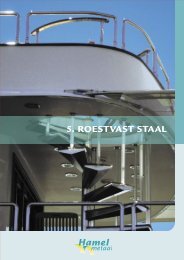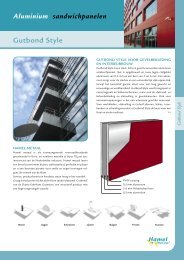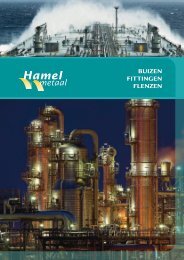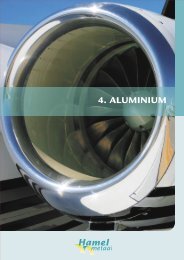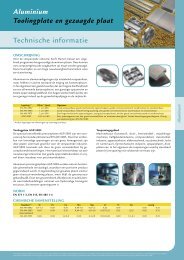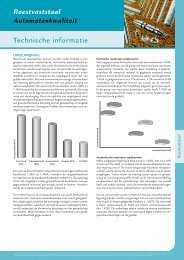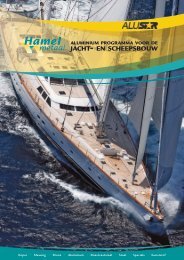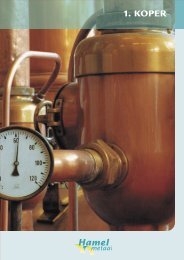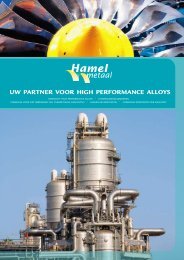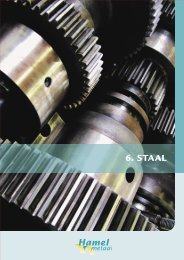yacht and shipbuilding - Hamel
yacht and shipbuilding - Hamel
yacht and shipbuilding - Hamel
You also want an ePaper? Increase the reach of your titles
YUMPU automatically turns print PDFs into web optimized ePapers that Google loves.
5. CertiFiCAtiOn<br />
All materials are available with various certificates, from a 2.2 factory certificate to a<br />
3.2 certificate. If a product has not been certified according to your required authority, we<br />
can have this approval carried out for you by qualified bodies. Generally, a 3.1 certificate is<br />
available for all plates, bars <strong>and</strong> profiles. A 3.2 certificate is available for various plates <strong>and</strong><br />
profiles as st<strong>and</strong>ard, depending on the required inspection authority. Below is a brief<br />
explanation of the significance of the various inspection documents.<br />
2.2 FACtOry inSPeCtiOn CertiFiCAte<br />
This document normally only shows a chemical analysis of the product <strong>and</strong> sometimes a few<br />
mechanical values. These results come from r<strong>and</strong>om measurements taken during production<br />
in the factory <strong>and</strong> have relationship to the material that is ultimately delivered. There is no<br />
direct relationship between the supplied product <strong>and</strong> the inspection document in the form<br />
of stamps, etc. The document is declared valid by the producer (<strong>and</strong> signed).<br />
3.1 inSPeCtiOn rePOrt<br />
This document shows test results prescribed in the product st<strong>and</strong>ard from the party<br />
(batch/production run) that supplies the final material. There is a direct relationship<br />
between the product <strong>and</strong> the document. The relationship is guaranteed by a stamp/<br />
paint marks/labels or something similar. An independent authorised controller in the<br />
factory signs the inspection document. This is usually somebody who works in<br />
quality management.<br />
3.2 inSPeCtiOn rePOrt<br />
As for a 3.1 certificate, but with the signature of an inspection body (e.g. Lloyds’DNV/ABS)<br />
designated by the purchaser. This can be done directly during production in the factory (3.2),<br />
or afterwards through so-called external approval (3.1 with supplemental inspection 3.2).<br />
The controller of the inspection body is mostly present during sampling <strong>and</strong>/or testing.<br />
The document is often given a cover page that is signed by the controller <strong>and</strong> refers to<br />
the 3.1 document prepared <strong>and</strong> attached by the factory.<br />
With special thanks to Royal Huisman Shipyard<br />
<strong>and</strong> Vitters Shipyard for providing the photographs<br />
used in this folder.<br />
P.O. Box 30255, 1303 AG Almere, The Netherl<strong>and</strong>s<br />
t: +31 (0)36 549 51 51 F: +31 (0)36 549 51 55 e: info@hamel.nl<br />
www.hamel.nl<br />
<strong>Hamel</strong> metaal has compiled this publication with the greatest possible care. However, it is unable to accept any liability for any damage resulting from<br />
omissions or inaccuracies in this brochure. Nothing in this publication may be duplicated or published in any form whatsoever without the written consent<br />
of <strong>Hamel</strong> metaal. © Copyright <strong>Hamel</strong> metaal B.V., 2009



